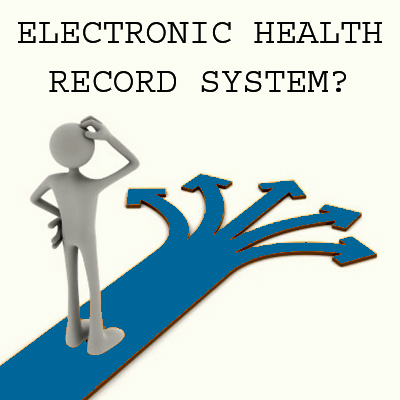Technology is a two way sword – adopting the correct technology will reap you good rewards and high profits; however, choosing the wrong technology will bring down your efficiency and prove costly. Selecting an Electronic Health Record system is a critical decision as it is a big investment for hospitals. According to a recent survey by Software Advice, a large number of healthcare organizations are stuck with either unsatisfactory EHR systems or dissatisfied with their vendors. Another survey, which focused on doctors, found that 39% would not recommend their current EHR system to a colleague. These surveys all point to that one major issue – hospitals and healthcare providers have not managed to select the right EHR system. This translates into a big loss due to the high cost of EHR adoption – the price of the software, training costs, hardware upgrade costs and loss of time and productivity. Indeed selecting the wrong EHR is a very expensive exercise.
Selecting the correct EHR will result in saving both money and time in the long term for hospitals and medical professionals alike. Some of the key factors to consider when selecting an EHR are:
Basic criteria in EHR selection
The vendor should be able to provide the following as the very basic software features:
- ONC-ATCB certification (six certifying bodies)
- HIPAA privacy and security compliant
- Meaningful use reporting
- Ability to generate county, state, and federal reports
- Support HL7 messaging standard
- Support Secure Sockets (SSL) digital certificate
- Audit trail capabilities
- ASP/SaaS hosted or client/server on premise
Hospitals and healthcare providers need to make a list of all the required and necessary features, as well as those features that would be nice to have in the software – and then eliminate vendors who do not meet these requirements.
Demonstrated ease of use by all
Surveys have shown that the largest number of complaints about EHR systems was the difficulty in using the software, with most finding it too cumbersome and complex. Everyone who will be using the system should be part of a demonstration session by the vendor to ensure that they can work comfortably with the system on a daily basis. Vendor demonstrations should also cover the following points:
- Determine which EHR system meets your high level requirements.
- Identify ways that EHR software will make your office more efficient.
- Determine which EHR system falls within your budget.
- Determine hardware compatibility with current infrastructure.
Need based pricing
With the growth in the EHR market, vendors are offering systems to cater to all types and sizes of organizations. A specialty hospital may not need generic software and the vendor should be able to provide a system that is geared for that particular organization’s needs. Costs associated with purchasing and implementing the system needs to be taken into consideration to reach a cost-benefit analysis. These should cover:
- Software license fees
- Include all modules (ePrescribing, Lab and HIE interface, EDI)
- Hosting fee
- Implementation and training
- Hourly vs. fixed fee
- Templates customization cost
- Include software upgrades
- No charge for after hour upgrades
- Access to date schema
- Interfaces (device, lab, imaging, portal, HIE, PM)
- Third party software
- Claims processing
- Web portal
- Template customization
- Report customization
Vendor reference check
It is very important that there are stringent checks made on the vendor providing the system. After all, purchasing a system does not end the relation with the vendor. The software provider must offer support in case of glitches and provide hands-on-training if required. The organization must check vendor references, keeping the following in mind.
- Get two or three reference from those that share your specialty.
- Check with each reference what they don’t like about the system.
- Find out how the vendor responded to any problems.
- Assess the vendor’s financial and strategic viability.
Selecting the correct EHR system will not only increase the productivity and efficiency, but will also prove to be profitable in the long run. When selecting and implementing an EHR system for your organization, follow these steps to get the best out of your investment:
- Assess your practice readiness
- Plan your approach
- Upgrade or select a certified EHR
- Conduct training and implement the system
- Achieve meaningful use of the system
- Continue quality improvement.



